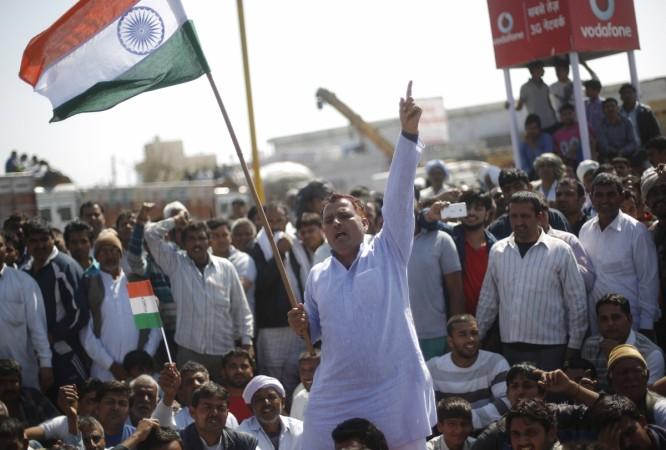
Violence during the Jat community's protests for quota in February this year in Haryana could have been avoided if senior officers had acted promptly to inputs provided by the central government, suggest the probe committee's report accessed by the Indian Express. The report by a panel led by retired IPS officer Prakash Singh is in the final stages of completion.
The report talks of senior officers "shirking away" from their responsibilities and the failure of an IAS officer posted in Sonipat in preventing the damage done to the Munak canal on Feb. 20, despite receiving inputs 24 hours ahead of the attack. The Cabinet Secretariat had informed Haryana based on "specific inputs" from the centre that the Jat agitators might breach the canal.
The panel reportedly noted down the statements of as many as 3,000 witnesses, many of whom alleged that senior officers panicked when violence erupted on Feb. 19. The probe report says that the deputy commissioner (DC) in one of the districts, where protests were held, handed over the magisterial powers to the additional deputy commissioner (ADC).
"There is a chain of command. First lieutenants reach the battle line, then follows the captain, then the major and then the lieutenant colonels and colonels and so on. The generals do not expose them at the battlelines, [sic]" the DC told the panel while justifying his action.
"There are situations where written orders have to be issued for giving magisterial powers to ADCs. Otherwise, by virtue of their designations, they are empowered to exercise such powers," the DC told the newspaper, adding that the police in the district had handled the situation carelessly.
According to the probe report, then Rohtak Inspector General of Police Shrikant Jadhav had summoned Jhajjar district Superintendent of Police Sumit Kumar from Jhajjar to Sonipat on Feb. 19. The protesters attacked Chhavani Mohalla in Jhajjar soon after Kumar and his men left for Sonipat. Jadhav was subsequently suspended.
The committee is expected to reprimand the chief secretary, additional chief secretary (Home), director general of police and other officials who failed to establish a control room in Chandigarh for all the districts to report on the protests and violence.
The Jat community's protests in Haryana demanding reservation under the Other Backward Classes (OBC) in government jobs and educational institutions started on Feb. 12, but took a violent turn on Feb. 18. At least 30 people were killed in the violence. The agitators agreed to call off the stir when the state government promised to fulfil their demands within a deadline set by them.
The Haryana Assembly on March 29 passed the Jat reservation bill, which the Cabinet had passed a day earlier, giving 10 percent reservation to people of five castes — Jat, Jat Sikh, Ror, Bishnoi and Tyagi — in educational institutions and Class-III and IV government jobs, and 6 percent reservation in Class-I and Class-II jobs.









!['Had denied Housefull franchise as they wanted me to wear a bikini': Tia Bajpai on turning down bold scripts [Exclusive]](https://data1.ibtimes.co.in/en/full/806605/had-denied-housefull-franchise-they-wanted-me-wear-bikini-tia-bajpai-turning-down-bold.png?w=220&h=138)



